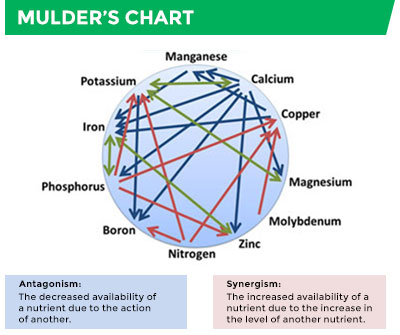Using Micronutrients in a Liquid Blend
To attain high yields, crops require a balanced ratio of macronutrients (NPK – nitrogen, phosphorus and potassium) and micronutrients (zinc, copper, manganese, iron, boron, etc.) The correct amount of some nutrients and the limited supply of others can create imbalances and reduce yield potential.
However, the higher the yield a crop produces, the more nutrients it takes out of the soil. Today’s high-yielding crops remove more nutrients from the soil than ever, leading to issues of nutrient availability.
Weather also plays a part, with most micronutrients virtually unavailable in the cool/cold temperatures and wet soil conditions which are typical of spring across Western Canada. Using a liquid starter fertilizer at seeding time can help correct micronutrient deficiency in the soil, preventing common early-season deficiencies in crops and improving yields.
When it comes to using micronutrients, you have some options. Choosing the best form of micronutrients for your application will help you make the most of their benefits. I recommend chelated micronutrients, which contain ethylene diamine tetra acetate (EDTA).
EDTA protects zinc, manganese, calcium, copper and iron from ‘tie-up’ in the soil and to phosphorus. This helps make the micronutrients more available to plants and ensures a better efficiency while preventing deficiencies. The EDTA family of micronutrients are synthetic, and are also the strongest chelating agents. Far stronger than organics, they are used at a ratio of 10:1.
Chelated micronutrients have several benefits that will earn them a place in your field. Their high quality, versatility, ease of handling and compatibility for use with a wide variety of crops make them a smart investment in any planting season.
Chelated micronutrients are high quality with low levels of impurities. They resist soil fixation and are highly stable. That stability means the micronutrients will remain available for longer in the growing season, giving your crop more time to access them.

Micronutrients can be tank mixed with liquid fertilizers and pesticides to increase efficacy and reduce chemical reactions between nutrients and other components in the tank. Typically, both root and foliar uptake is strong. After spraying with chelated micronutrients, crops can take them up quite quickly.
Micronutrients are compatible with 100 per cent orthophosphate grades, and are compatible with most herbicides, fungicides and insecticides. Using micronutrients in an irrigation system can provide a quick treatment for nutrient deficiencies.
In addition to being highly compatible with other products, micronutrients are safe and easy to work with. They’re pH-neutralized, won’t damage your equipment and can be stored even at low temperatures. It’s a win-win-win. Chelated micronutrients can be used on wheat, barley, oats, canola, corn, soybeans, dry beans, alfalfa, potatoes and peas – just about any crop you can grow in Western Canada.
Once you’ve determined which micronutrients are right for your crop, all that’s left to calculate is how much to use and when. The answer to those questions depends on a combination of factors, including the results of your soil test, the soil structure and its holding capacity, the type of crop and your yield targets.
Applying micronutrients as a preventative measure can help you avoid yield delays and deficiencies. Speak with an OMEX Plant Health Professional today about including the micronutrients found in OMEX Primers, Starters and Foliars in your Nutrient Management Plan.
